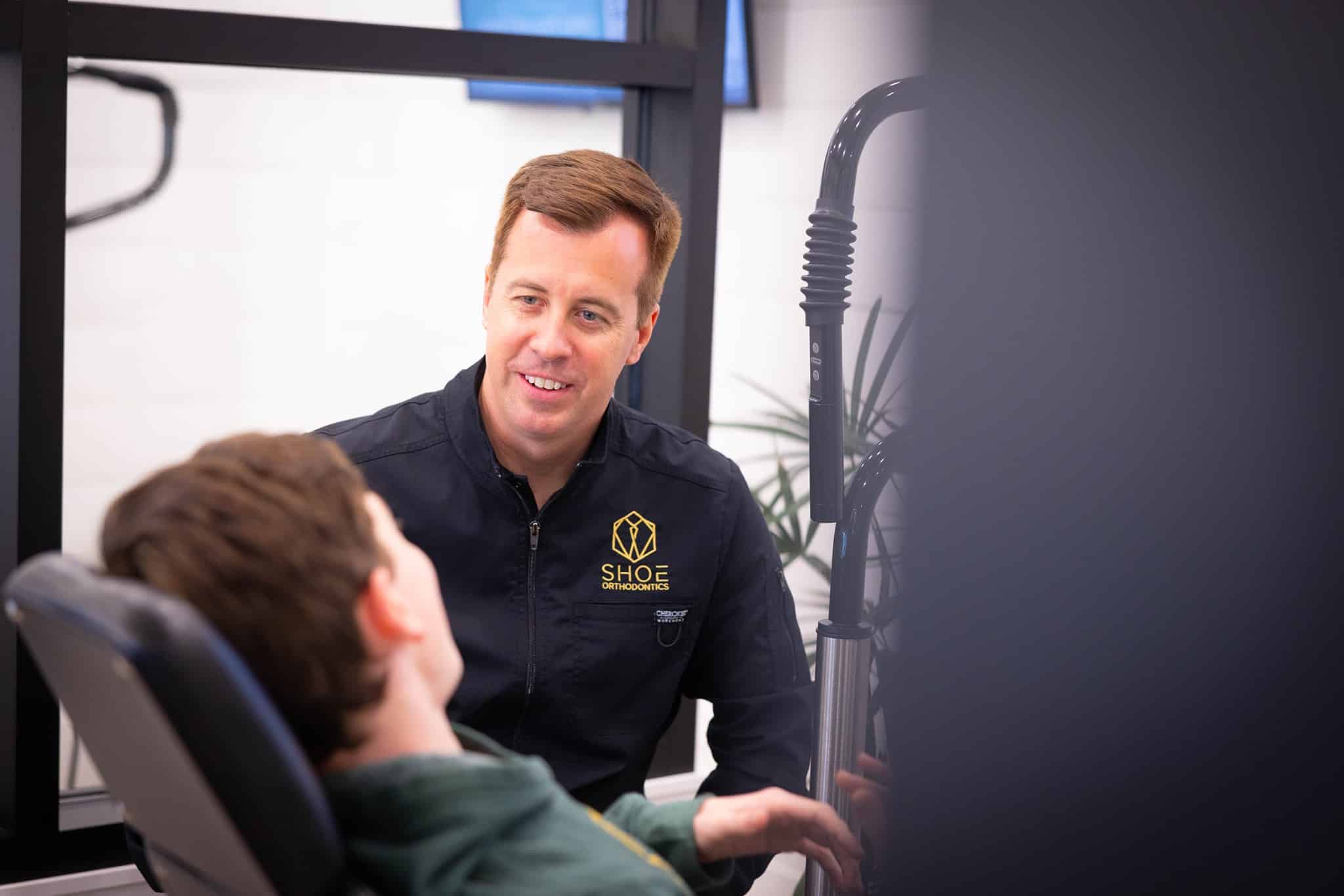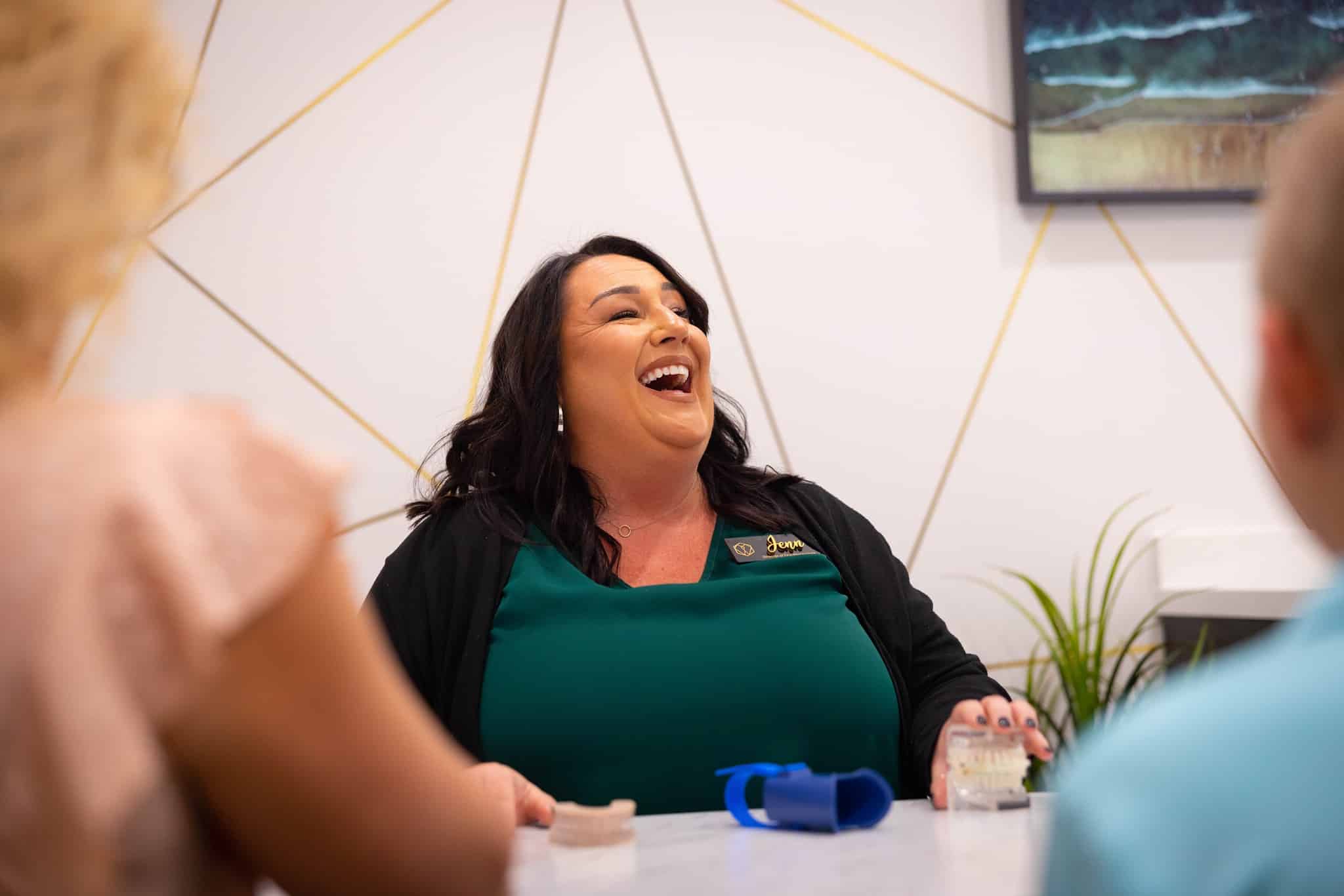Is your child ready for braces? How do you know if your child needs braces? Yes, you can look at their teeth and think they look crooked, but that isn’t the only indicator your child may need braces. There are many other factors to consider.
Shoe Orthodontics knows the importance of getting ahead on dental issues. The sooner we find them, the faster we can get treatment started. Early treatment now could save you and your child treatment time and money in the future.
Orthodontic care can affect the growth and development of your child’s teeth and jaws, which affects the structure of their face. The treatment plan from the orthodontist considers your child's jaw development, oral health, and overall health.
Which treatment option should your child choose? What types of braces are available for kids? You can find all this out with an early orthodontic evaluation.
When Should My Child See an Orthodontist?
Your child has probably been seeing the dentist for a while. Children usually start seeing a dentist when the first tooth erupts, if not sooner. So they’ve seen a dentist for several years by the time they’re ready to see an orthodontist.
At what age should your child see an orthodontist? The American Association of Orthodontics recommends that children see an orthodontist when they are 7 years old. At this age, they have both their baby teeth and some permanent teeth.
Your child’s orthodontist will do a thorough examination that will include digital imaging and X-rays. These will show us what dental issues might be there now and what issues your child might face in the future.
X-rays can determine if all adult teeth have fully developed in the gums. They can check if the adult teeth are in the right place to come out when the baby teeth fall out. Digital images show whether your child has crowded teeth, tooth decay, or gum disease, among other dental issues.




What Is the Best Age for Braces?
What age can you get braces? If you see an orthodontist at age 7, can a 7-year-old get braces?
We can prepare your child for braces at an early stage. However, we prefer to wait until most of their permanent teeth have grown in before applying braces.
We do this using a two-phase braces treatment. This is if we feel your child will need both phases. Not every child needs the early intervention of the two-phase braces treatment.
What Are Two-Phase Braces?
Shoe Orthodontics uses two-phase braces on kids to prevent dental issues in the future. The first phase serves mainly as preparation for the second phase when we place your child in braces.
Phase I Braces Treatment
Phase I braces treatment involves treating minor issues that can become major ones later. This can include adding a palate expander to widen the upper jaw and reduce tooth crowding. We might add a tongue crib if your child thrusts their tongue against their teeth or sucks their thumb, both of which can lead to overbites or open bites. We might add spacers if your child loses a tooth prematurely.
Our goal is to help your child’s teeth move into place on their own. Phase I treatment also helps reduce the chances of tooth extractions and long braces treatment later on.
Once Phase I treatment is finished, we can move on to Phase II in a few years.
Phase II Braces Treatment
Phase II (or Phase 2) braces treatment usually involves clear or metal braces or clear aligners. We usually like to do Phase II treatment between 11 and 13 years of age, when most permanent teeth are in.
Phase II treatment corrects any orthodontic issues left after Phase I treatment and those that have emerged since then. Phase II treatment is usually shorter due to corrections made in Phase I.
Braces or Clear Aligners for Teens
Why wait for braces treatment? We’ve mentioned that we prefer most permanent teeth to be in first. There is another big reason to wait. Braces or clear aligner treatment can only be successful with the patient’s cooperation.
Wearing braces or clear aligners is a big responsibility. To keep teeth healthy, your child should brush and floss regularly. This prevents tooth decay, gum disease, and white spots on teeth caused by enamel decalcification.
If your child is wearing clear aligners, they must wear them at least 22 hours a day to be fully effective. They will also need to keep up with their aligners and not lose them.
It’s a lot easier for teenagers to keep up with these responsibilities. It’s one reason why Phase II braces treatment is held until the child is older. We will treat your child sooner if they have urgent dental problems that need immediate attention.
How Do I Pay for My Child’s Braces?
You’ve seen the orthodontist with your child. Your child needs braces. How do you pay for children’s braces?
At Shoe Orthodontics, we have several financing options to make braces treatment more affordable. We offer flexible payment plans made to fit your budget. We don’t charge interest on our in-house payment plans.
We also will work with you to determine how much your insurance will cover. We offer a 5% discount for those who pay in full up front!
One thing you won’t get from Shoe Orthodontics is hidden fees. We ensure you know the cost of treatment upfront so you can make an informed decision on how to pay.
We want your child to have a great start to their oral health, which is why we work with you to make their treatment affordable!
Braces for Kids in Hanover, PA
Is your child ready for braces? Early orthodontics is vital for great oral health throughout your child’s life. Shoe Orthodontics can provide braces for your child to achieve a lasting great smile.
Schedule a free consultation for kids’ braces in Hanover, PA, or Reisterstown, MD. Shoe Orthodontics will provide a full examination and let you know whether your child will need braces. We will help your child get an early start on a lifetime of beautiful smiles!





